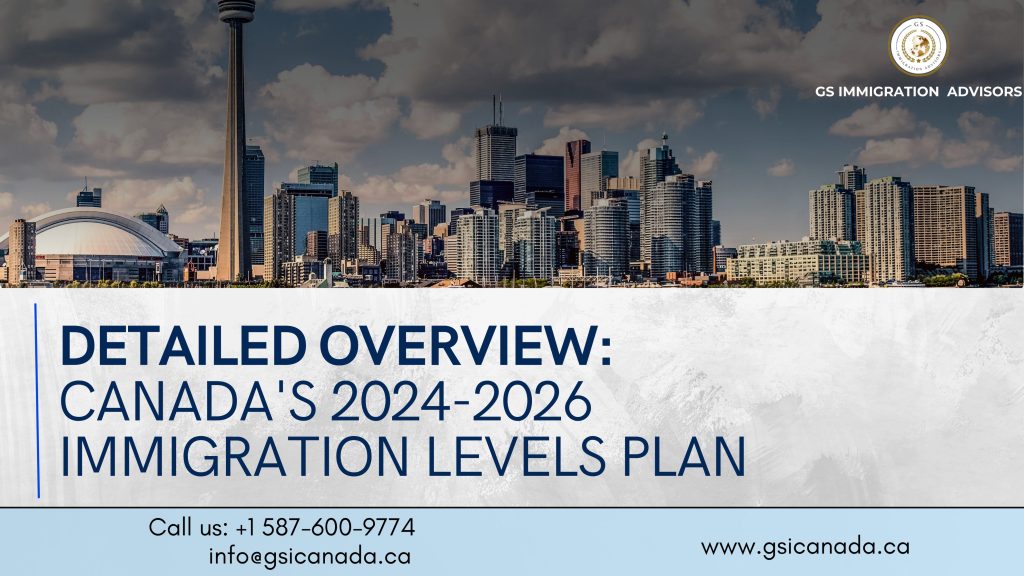
Immigration, Refugees and Citizenship Canada (IRCC) has released the Government of Canada’s Immigration Levels Plan for 2024-2026. Building on the previous 2023-2025 Plan, Canada is set to welcome 485,000 new permanent residents in 2024, increasing to 500,000 in 2025 and maintaining that level in 2026. The plan emphasizes economic growth, supports family reunification, and responds to humanitarian needs, reflecting the rapid growth of immigration in recent years.
A key aspect of this plan is the focus on increasing French-speaking permanent residents outside Quebec. In 2022, Canada met its target of 4.4% for French-speaking immigrants. The new targets for 2024-2026 are set at 6% for 2024, 7% for 2025, and 8% for 2026.
Economic and Social Benefits of Immigration
Immigrants are vital to Canada’s labour market and future economic growth, particularly in supporting the transition to a green, net-zero, and digital economy. They help fill critical labour gaps in sectors such as health, STEM (Science, Technology, Engineering, and Mathematics), trades, transportation, and agriculture.
For the Family Class, immigration has both social and economic benefits. Family support plays a key role in newcomers’ well-being and adaptation. Additionally, spouses and partners often enter the workforce, contributing to household income, while parents and grandparents may provide childcare, enabling their sponsors to participate in the workforce.
Humanitarian Commitments
Canada has a long-standing tradition of providing protection to those in need, and the Government remains committed to humanitarian efforts. Immigration planning goes beyond setting numerical targets; it also requires ensuring that newcomers receive adequate support services, including housing and healthcare. This requires coordination and collaboration across all levels of government and society. IRCC has already begun efforts to implement a holistic, integrated approach to admissions planning, involving various partners and stakeholders.


Key Points from the 2024-2026 Immigration Levels Plan:
- French-speaking Admissions Outside Quebec:
- The targets for French-speaking permanent residents outside Quebec are 6% in 2024, 7% in 2025, and 8% in 2026. These targets are part of the overall immigration plan, not additional admissions, and apply specifically to areas outside Quebec. Once Quebec releases its own immigration plan, these targets may be adjusted.
2. Economic Immigration Programs:
- Federal Skilled Programs: This category includes the Federal Skilled Worker Program, Federal Skilled Trades Program, and Canadian Experience Class.
- Temporary Resident to Permanent Resident Pathways: These programs, based on temporary public policies, are expected to complete all admissions by the end of 2023.
3. Entrepreneurial Programs: This includes the Start-up Visa Program and Self-employed Persons Program.
- Municipal Nominee Program: Admissions under this new program will be included once it is launched.
- Caregiver Programs: Admissions include those from the Home Child Care Provider and Home Support Worker Pilots, as well as legacy programs such as the Live-in Caregiver Program.
4. Quebec’s Immigration Plan:
- Under the Canada-Quebec Accord, Quebec has authority over the selection of immigrants destined for the province, except for the family class and protected persons. The estimated admissions targets for Quebec’s economic immigration programs are 37,990 in 2024, 34,500 in 2025, and 35,500 in 2026.
5. Humanitarian Programs:
- Canada will continue to offer protection to vulnerable populations, including human rights defenders and LGBTQI+ individuals. Additionally, admissions will address ongoing crises such as the situation in Afghanistan and commitments to Uyghurs and other Turkic Muslims.
6. Other Humanitarian Admissions:
- This category includes individuals admitted on humanitarian and compassionate grounds, for public policy reasons, or under the permit holder class. It also includes some admissions related to the Afghanistan response.
In summary, Canada’s 2024-2026 Immigration Levels Plan continues to prioritize economic growth and humanitarian commitments while ensuring that adequate services and supports are in place for both newcomers and Canadian communities. The plan reflects a coordinated, integrated approach to immigration that aligns with Canada’s broader societal and economic goals.